Last week was full of new adventures for me at the Burritt. I’ve been giving textile demos for a decade now, but I’ve never done it in 19th century costume before in a historic cabin on historic textile equipment.
On Tuesday, I got to educate 160 first graders on how their ancestors processed, spun, dyed, and wove/knit fabric for their clothing in rural areas in the South. It was a chilly morning on the mountain and I was thankful for the leggings I had on under my floor-length, long sleeved dress. (Next time, I may opt to also wear the petticoat.) Almost all of my audience were actively engaged and got to see, touch, and smell every step of the process. (I brought raw and washed fleece for them to touch and smell). Most of them had never seen a spinning wheel or loom—and those who had seen them hadn’t got to see them in action before.

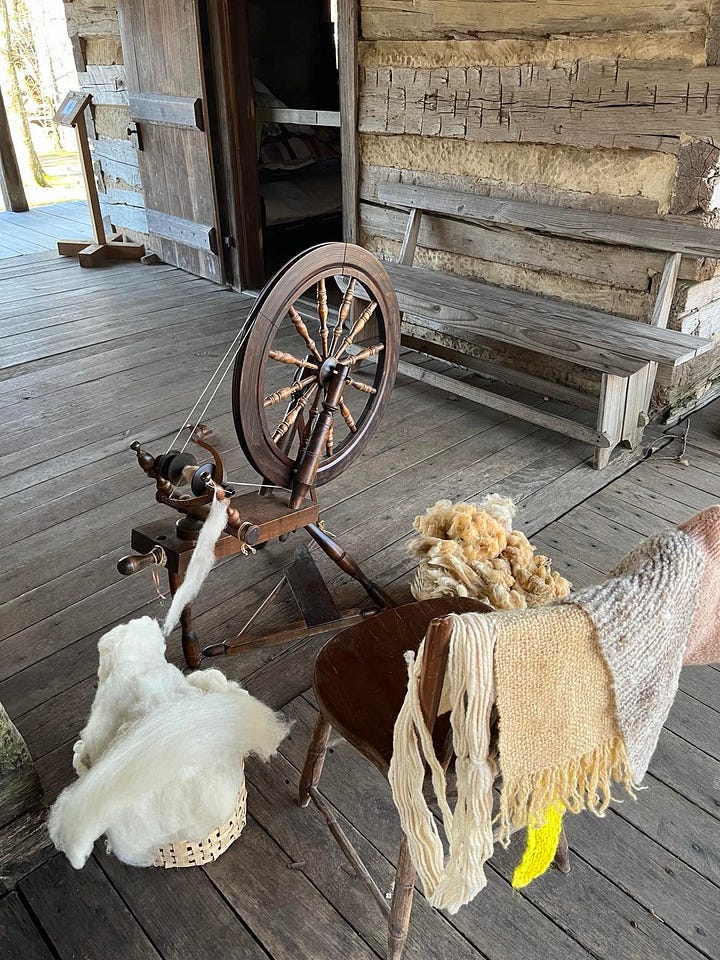
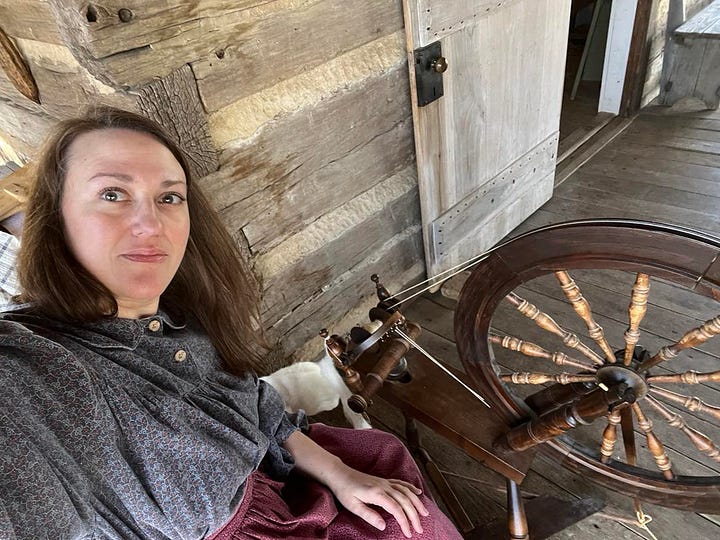
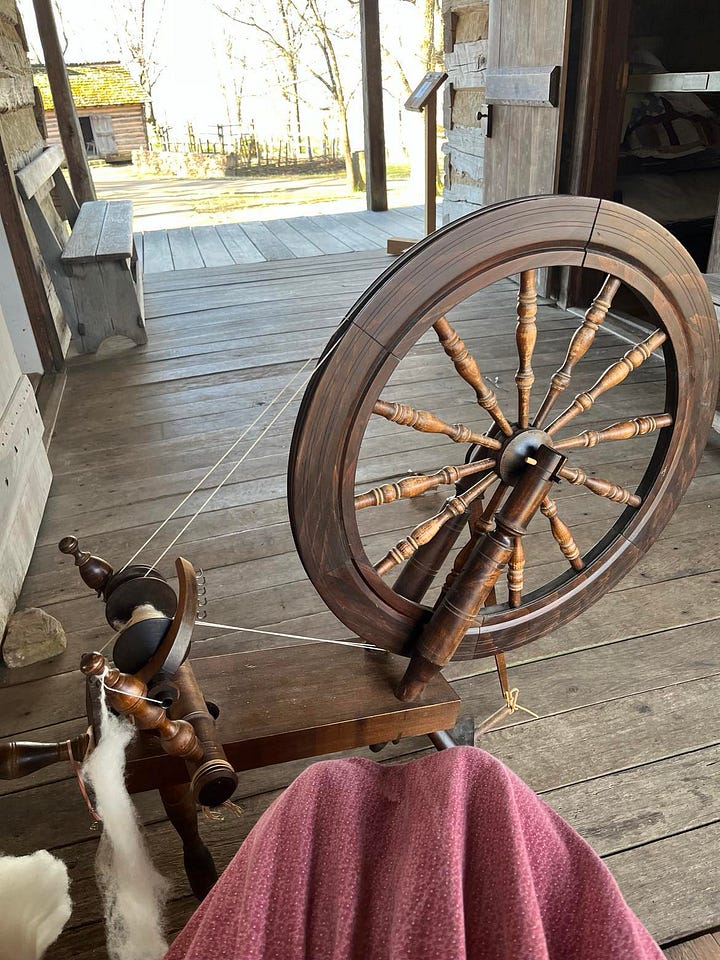
I get to demonstrate weaving on the loom that Ellen and I set up this Thursday and Friday for the Spring Farm Days event at the Burritt—another opportunity to share textiles with the younger generations.
On Wednesday, I was officially offered a job as a part-time historic interpreter at the Burritt (on the days I’m not in my studio at Lowe Mill), so I’ve been doing research on hand spinning and hand weaving during this time period (1840-1860s) in the South to make sure I am sharing accurate historic information with visitors. Spinning and weaving hasn’t changed much in general, but in most parts of the country, hand-processed textiles were starting to fade out as a cottage industry by the 1830s and onwards. The rural South, however, continued these traditions much longer—mostly because it was cheaper to produce your own family textiles than to buy them or because you didn’t have access to mill produced yarns, cloth, etc.
I also found this next picture (Alabama Historic Archives) from an area where my father’s family lived in the Florence, Alabama area (Blue Water Creek, specifically) dated in the 1920’s—showing that home textile production was definitely still part of domestic life in rural Alabama. Looking at photos of my grandparents as children (both my grandparents were born in the late 1920s), I know that the fashion was still pretty much the same as the late 19th century for rural farmers in this part of the country—though skirt lengths got a little shorter as did some women’s haircuts. My grandfather told me that the first person to own a motor vehicle in my hometown (Lexington, AL) was the postman—and that wasn’t even until the late 1930’s or early 1940’s. My grandparents rode in mule-drawn wagons as children and early teens, had no running water or indoor toilets, and didn’t have electricity until the 1940’s.

On Saturday, I taught a Natural Dyeing for Beginners class at the Burritt Folk School and we dyed cotton dish towels and mini yarn skeins using turmeric, black tea, avocado pits, and onion skins. It was a 4 hour class requiring a good bit of heavy labor on my part (mostly with the setting up and tearing down), so after I finished, I went home, took some Tylenol and stayed in the recliner until almost bedtime. My next class is at the end of May—when we’ll be working with raw fleeces.

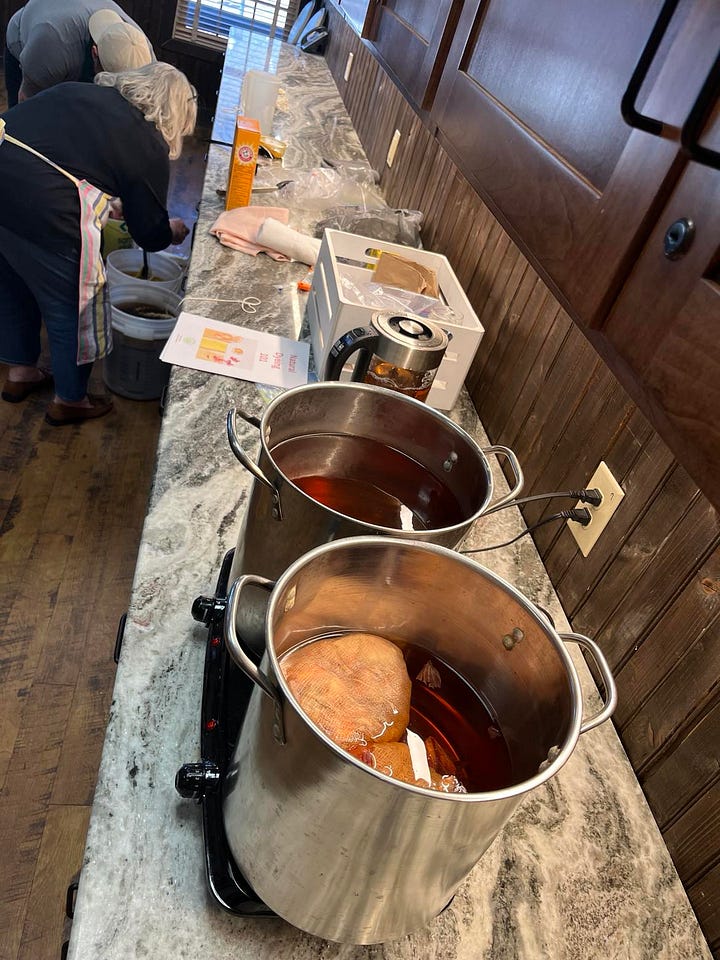
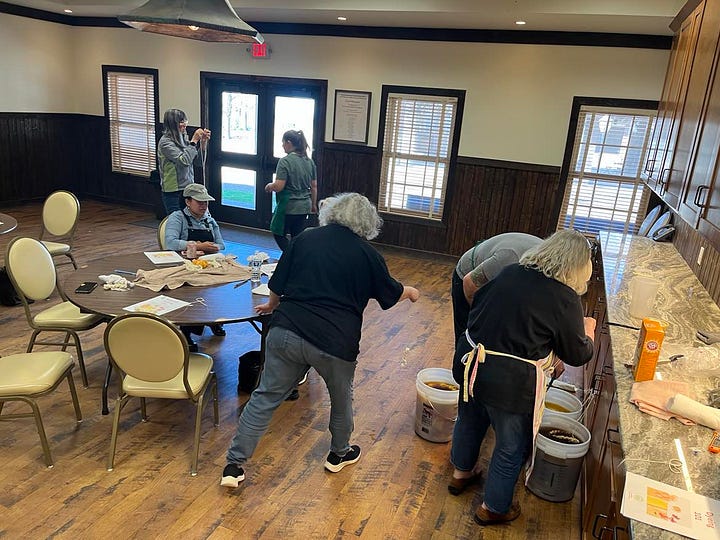
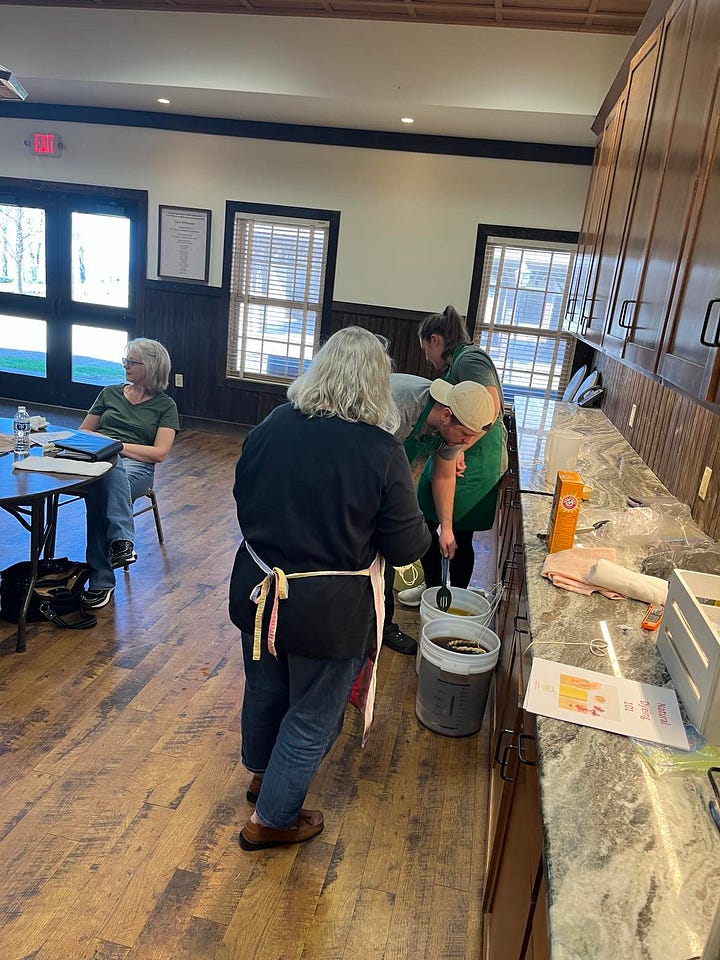





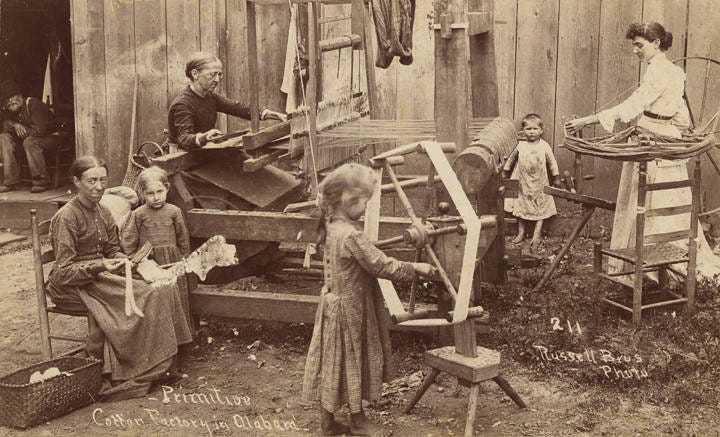
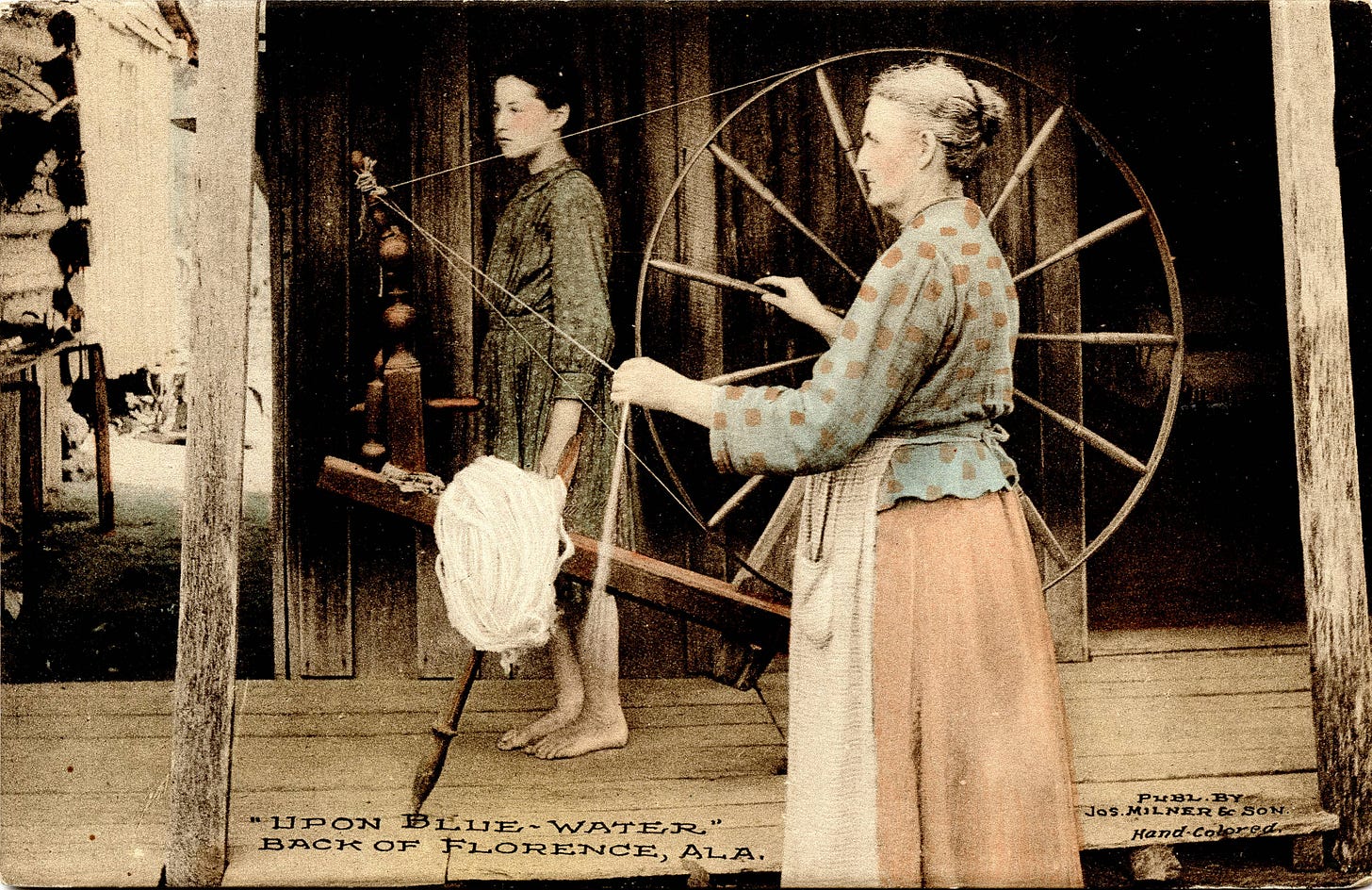
Wonderful! I love doing historical demos. My favorite is 18th C
I love that you share from unwashed fleece to knit and weave. It's very special that you shared family pictures too. I hope to meet you sometime.